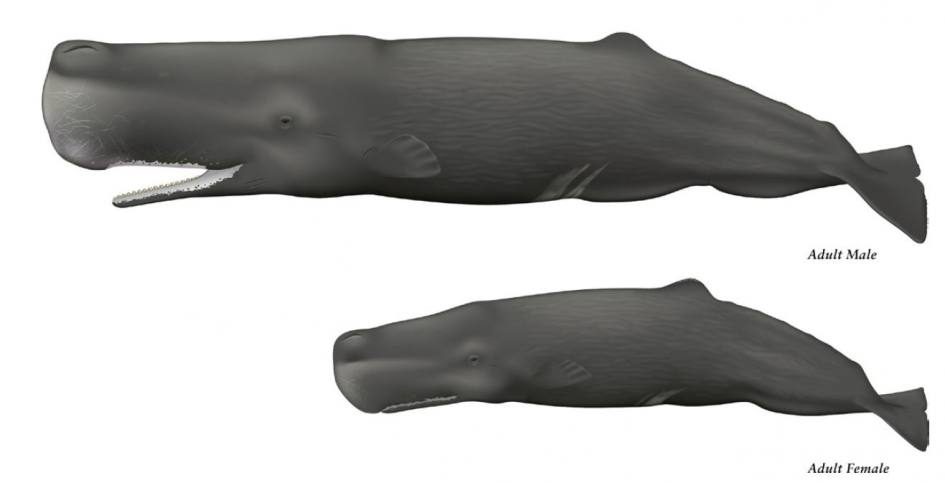
“Superbull” male Sperm Whale (Physeter macrocephalus) with the typical left-angled blow
Hello onshore mammals 😉
At the beginning of our tour today we accompanied a group of Common Dolphins (Delphinus delphis) on their way south. They were calm and used the current generated by our boat to save energy on their way – clever little guys!!

A group of Common Dolphins (Delphinus delphis) swimming next to our boat
We placed the hydrophone in the water to hear them communicate. The Dolphins were silent, but many click sounds indicated that there must be Sperm Whales (Physeter macrocephalus) nearby. Not much later two individuals came to the surface. After some observing, they decided it was time to leave us for a deep dive. On our further way we met some more female Sperm Whales over and over again.

Two Sperm Whales (Physeter macrocephalus) resting at the surface
In general, the last few days we have been very lucky and we found several individuals of Sperm Whales at different locations on our tours. Yesterday there was even a very large male among the females. The male individual was so big that we are tempted to call him “Superbull”. He made his female companion look quite small next to him.

Female Sperm Whale (Physeter macrocephalus) on the left and a much larger male Sperm Whale on the right – the difference in size is striking
Accordingly, Sperm Whales show a strong sexual dimorphism in their appereance. We are able to determine their sex on basis of their size and by the shape of the bulb on their head. The males are clearly bigger and can grow up to 18 meters long. The bulb on their forehead is much more pronounced than that of the females, who can reach sizes of up to 12 meters (as shown in the figure below).

Sexual dimorphism between adult male (top) and adult female Sperm Whale (Physeter macrocephalus) (bottom). Source: Encyclopedia of Marine Mammals IIIrd Ed. Bernd Würsig, I. G. M. Thewissen & KIT M. Kovacs. Illustrated by Uko Gorter.
Next time you spot a Sperm Whale take a closer look! Maybe you can see the difference and tell for yourself the gender of the whale. 🙂
References:
Würsig B., Thewissen J.G.M., Kovacs K. M. 2018. Encyclopedia of Marine Mammals, third edition. pp. 919









